What's New
Displaying results 2691 - 2700 of 4052

Resource | Publications,
The Health Systems in Transition (HiT) profiles are country-based reports that provide a detailed description of a health system and of reform and policy initiatives in progress or under development in a specific country.
There are positive indications in Myanmar that, along with the changes in the political system and administrative structures following the 2010 national elections, the new government is undertaking reforms which include the health sector. Challenges remain for further improving health equity among its population.
Addressing health inequities is of paramount importance for Myanmar, needing a major reform that will ensure health care services reach the poor and the disadvantaged groups, in particular minority groups and in conflict-affected and hard-to-reach areas, through the effective functioning of township health system. From an equity perspective, the move towards primary health care concepts and practices is a step in the right direction.
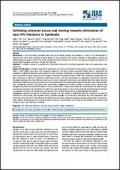
Resource | Publications,
Situated in the heart of South East Asia, Cambodia is a low income country that is recovering from several decades of regional and internal conflict. Its population of 14.86 million is growing at a rate of 1.54% with 80% living in rural areas and 20% dwelling in cities. With a life expectancy of 57 years for men and 65 years for women, gross domestic product is [estimated at] 946 United States dollars per capita purchasing power parity.
In the mid-1990s, Cambodia faced one of the fastest growing HIV epidemics in Asia. For its achievement in reversing this trend, and achieving universal access to HIV treatment, the country received a United Nations millennium development goal award in 2010. This article reviews Cambodia’s response to HIV over the past two decades and discusses its current efforts towards elimination of new HIV infections.
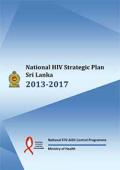
Resource | Publications,
The National Strategic Plan (NSP) 2013-2017 is designed to guide Sri Lanka’s response to HIV/AIDS & STI control in the next five years and has been formulated with broad stakeholder involvement, drawing on the existing strengths and successes and the lessons learned in the last decade. It considers the policy and legal environment, the available scientific evidence, international best practices, and the estimated needs for prevention and treatment and current coverage rates and is informed, as best as possible, by resources that would be available. Linked to the strategic plan is a framework for monitoring and evaluation of progress and achievements.
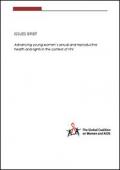
Resource | Publications,
This issues brief is part of a series commissioned by The Global Coalition on Women and AIDS (GCWA). It is designed to bring to light critical issues pertaining to the SRHR of young women living with, at risk of and affected by HIV, along with examples of good practice interventions and successful scale-up approaches. It also examines how multiple dimensions of inequality create unique challenges for young women, and the subsequent impact on their health and rights. The brief is intended to guide global advocacy and inform negotiations in the context of the Post-2015 development framework. The brief concludes with seven recommendations to advance young women’s sexual and reproductive health (SRH) and to uphold their rights in the context of HIV.
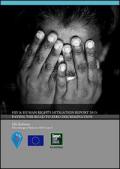
Resource | Publications,
Advancements in HIV science mean that today people living with HIV (PLHIV) can work, study, play and participate in social activities without any impact on their productivity or interaction with others. HIV cannot be transmitted via skin-to-skin contact or through everyday social interaction. Antiretroviral (ARV) medicines to treat HIV are taken every day at the same time and received from doctors at regular intervals.
Yet, stigma and discrimination on basis of HIV status continue to persist not only in Malaysia, but also elsewhere.
As part of its European Union-funded Asia Action project, the Malaysian AIDS Council (MAC) has compiled a total of 17 discriminatory cases that were reported by PLHIV in 2013. These cases were reported to the MAC Policy Department who interacted with them directly to ensure accuracy of the accounts. Details were noted in a standardised form. When transmitted between MAC and government agencies, names and identification details were blacked out. Actions toward mitigation of each case were taken within two weeks of receipt.
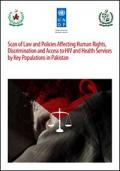
Resource | Publications,
The Scan of Laws and Policies Affecting Human Rights, Discrimination and Access to HIV and Health Services by Key Populations in Pakistan identifies the current status of legislation, policies, institutional frameworks in Pakistan that safeguard the universal human rights of the key affected populations with regard to the HIV prevention, care and treatment. The scan establishes a baseline on the current enabling environment (law, policies and institutions) in relation to safeguarding the human rights of the key populations and second, and it provides a set of recommendations to input into any reforms to promote an enabling environment where the human rights of the key populations are protected.
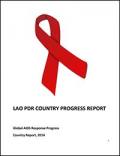
Resource | Publications,
Lao People’s Democratic Republic (Lao PDR), known for decades as a "landlocked country", has now become "land‐linked", in the recent years. This is due to the upgrading of roads both domestically and with its neighbouring countries such as Cambodia, China, Myanmar, Thailand and Viet Nam, with relatively higher HIV prevalence. As the country is committed to economic expansion, this increased transit routes enabled new opportunities in employment and trade with increased mobility of the people in and out of the country. This dynamic change of increased mobility across borders coupled with the existing commercial sex vulnerabilities and the emergence of groups at high risk, places Lao PDR on a continuous alert of a new HIV threat due to the growing risk to HIV vulnerabilities.
As the NSAP 2011‐2015 is in the penultimate year of implementation, the preparation process of this report is an opportunity for the National AIDS Authority and its partners to review and reflect on the progress made in the last three years, as well as to consider the efforts needed to reach the ambitious targets set in the National Strategy. Recognising its important status, all partners have been invited to take part in an open and participatory process for the 2014 report.
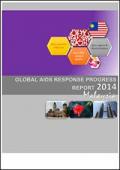
Resource | Publications,
Since 1986 when the first HIV case made its debut, HIV has become one of Malaysia's most serious health and development challenges. At the beginning of the epidemic, injecting drug users was key driven factor that charted the graph by leaps and bounds as the country’s responses focused more on creating awareness and early detection.
To streamline National response, AIDS/STD Sector was established within the Public Health Division in Ministry of Health Malaysia in 1993. In 1992, Malaysia AIDS Council (MAC) was established under the auspices of the Ministry of Health to compliment the national responses with special focus on most-at-risk populations. Without doubt, the current prevention landscape provides a number of opportunities that were not available in 1986.
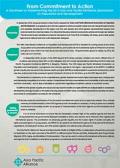
Resource | Fact Sheets,
In September 2013, the governments in Asia Pacific adopted the 'Asian and Pacific Ministerial Declaration on Population and Development', a progressive and visionary agenda to advance people’s rights and well-being through inclusive and equitable development in the region over the next decade and which gained unprecedented support and endorsements from member states. It is critical that the policy directions and priority actions set forward are realized. The document is also valuable as a basis for discussions over Post-2015, the Beijing +20 review, and in other global, regional and national level and multi-stakeholder dialogues.
The Asia Pacific Alliance for Sexual and Reproductive Health and Rights (APA), in collaboration with partners, produced six factsheets on the main outcomes of the 6APPC on different topics: Women and Girls, Adolescents and Young People, Migrants, SOGI, Aging, and Modalities of Implementation. They can be used to continue the momentum at the local, national, and regional level, in addition to strengthen progressive commitments at the international level.
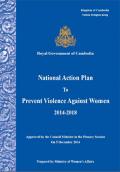
Resource | Publications,
In Cambodia, women and girls continue to be subjected to physical, psychological, sexual and economic violence, cutting across all divisions of income, culture and class in their daily public and private spheres. In contexts where women and girls face additional barriers in access to human rights, protection and justice they often experience additional risks for violence against women. This includes but is not limited to women with disabilities, women living with HIV, lesbian, bisexual and transgender (LBT) women, sex workers, entertainment workers, garment factory workers and other female employees, women who use drugs or their partners use drugs, women in prisons, indigenous women and women from religious or ethnic minorities.





